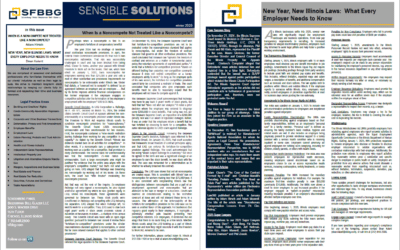Question: My wife lost her job as a result of her company downsizing during the pandemic and our family is now down to one income. Is there an effective way to tap our retirement accounts for the shortage of funds we now have without undue tax cost?
Answer: The Coronavirus Aid, Relief and Economic Security Act (the “Cares Act”) creates several provisions allowing plan participants to access their retirement assets in a tax effective manner. These provisions include penalty-free distributions, deferred payment of income taxes and favorable loan provisions.
Perhaps the most significant retirement plan provision of the Cares Act allows favorable tax treatment to eligible taxpayers by permitting the withdrawal of up to $100,000 from certain types of retirement plans including 401(k) plans, profit sharing plans and individual retirement accounts. Generally speaking, participant withdrawals from these types of plans are subject to income tax; a penalty tax of 10% is also imposed if certain exceptions are not satisfied. Under the Cares Act, any tax which is due upon the withdrawal of up to $100,000 from one of these types of plans can be reported as income and taxed over a three-year period, one-third in each of 2020, 2021 and 2022. The accompanying 10% penalty tax on retirement plan withdrawals by participants who have not reached age 59 1/2 will not apply. Also, if the distribution is from an employer-sponsored plan rather than an IRA, the usual 20% income tax withholding will not apply, thereby giving participants immediate access to all of their funds.
These favorable tax rules apply to plan withdrawals made in calendar year 2020. The rules only apply, however, to taxpayers affected by the Coronavirus. This would include anyone who or whose spouse or dependent is diagnosed with the virus. But it also applies to participants who suffer adverse financial consequences as a result of the virus such as being laid off or having working hours reduced.
One of the additional benefits of Cares Act withdrawals is the opportunity for taxpayers who take these withdrawals to recontribute the amount withdrawn to the retirement plan from which the funds were taken. The amounts withdrawn must be repaid within three years of the date of the distribution. If a full recontribution is made, no income tax will be imposed upon the withdrawal.
Another favorable provision of the Cares Act increases the loan limits for plan participants. Prior to the Cares Act, employees of 401(k) and other employer-sponsored plans were permitted to borrow up to the lesser of $50,000 or one-half of their vested account balance in these plans. As a loan, the amount borrowed would need to be repaid to avoid income taxes and, if applicable, penalty taxes on the amount withdrawn. The Cares Act now increases the loan limit to the lesser of $100,000 or 100% of the participant’s vested account balance for loans taken out prior to September 30, 2020. A related provision regarding loans in the Cares Act allows participants to repay existing plan loans over a lengthier period of time.
Be mindful that with respect to employer-sponsored plans, the provisions do not automatically apply. That is, the employer plan must allow for these special withdrawals and/or plan loans. If an employer does not agree to allow for these types of distributions and loans, then participants cannot avail themselves of this opportunity. Furthermore, taxpayers cannot borrow money from their IRAs so the Cares Act plan loan provisions will not benefit IRA owners. An IRA owner may, however, take advantage of the $100,000 withdrawal amount and repay it to his or her IRA.
You should also consider the possibility that because your wife’s employment was terminated, she may be receiving an immediate distribution from her employer-sponsored plan. She can then roll these funds over to an IRA and take a retirement plan withdrawal from her IRA up to the $100,000 limit since she would clearly be an affected participant under the Cares Act. If circumstances change and she is able to timely return the funds to her IRA, there will be no income tax on the funds withdrawn. She can also avoid any applicable penalty tax on the amount withdrawn.
The Tax Corner addresses various tax, estate, asset protection and other business matters. Should you have any questions regarding the subject matter or if you have questions you want answered, you may contact Bruce at (312) 648-2300 or send an e-mail to Bruce Bell.



